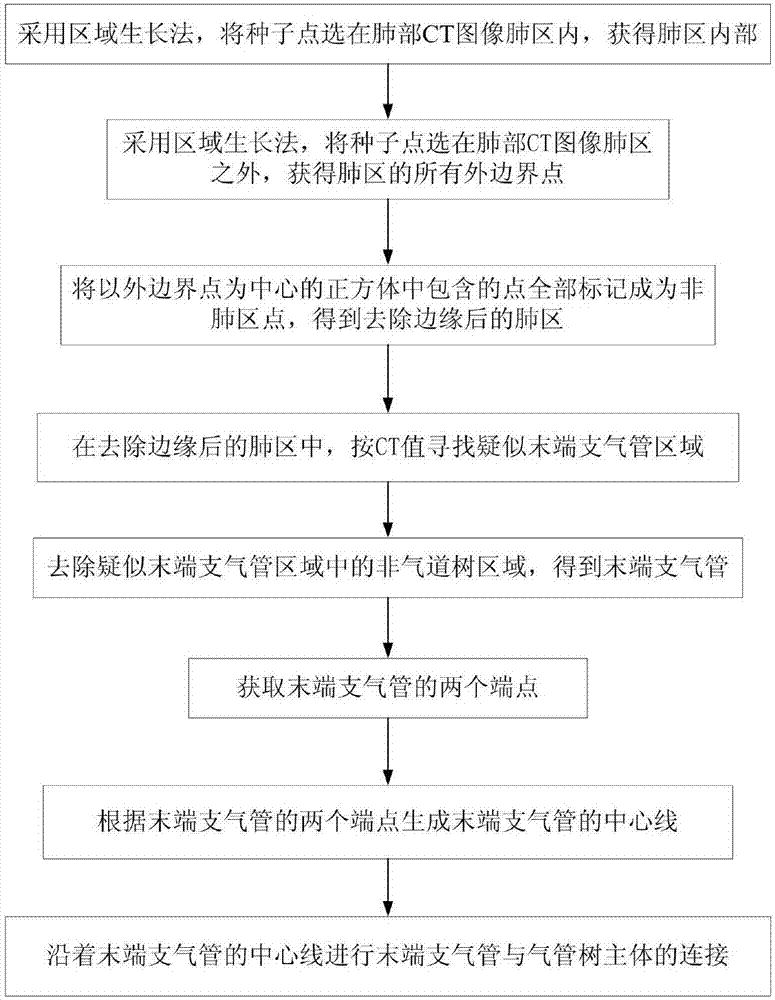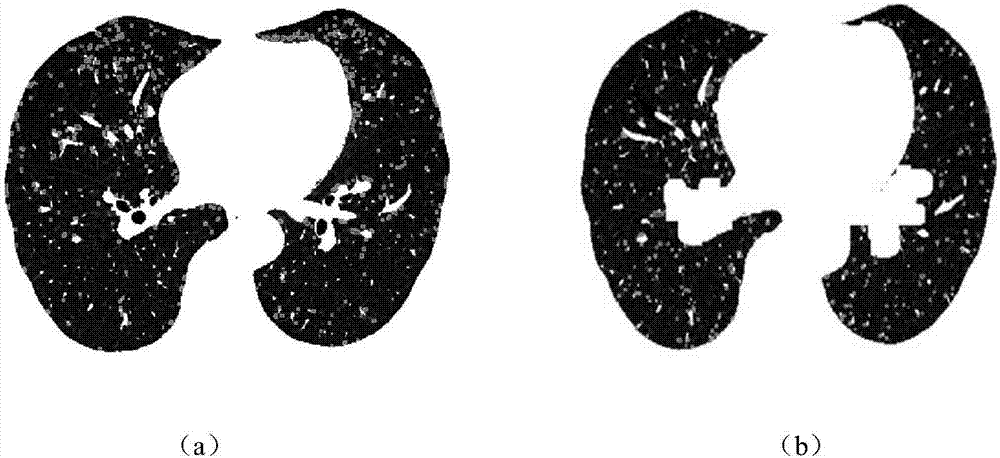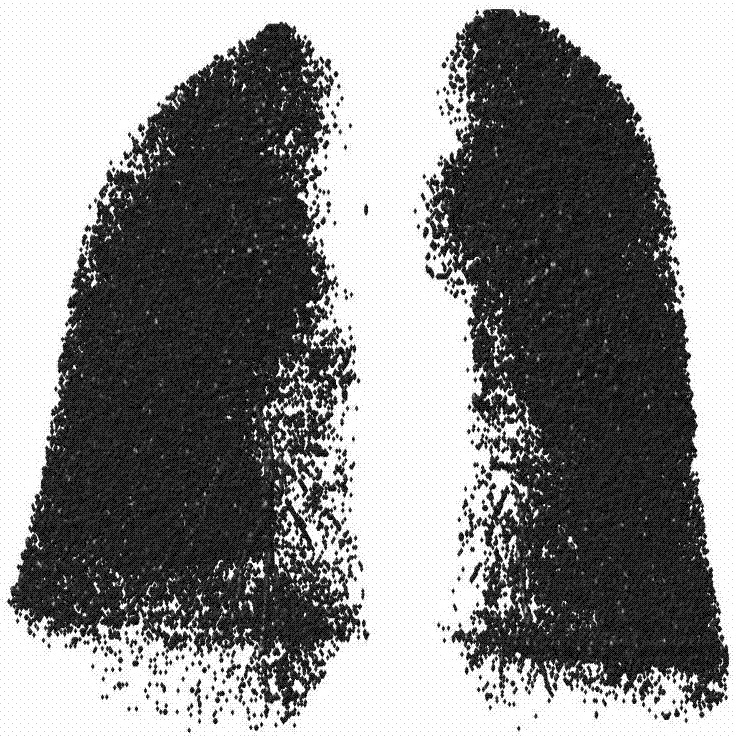Method for extracting terminal bronchial tree from lung CT image
A CT image and bronchial tree technology, applied in the field of image processing based on medical images, can solve problems such as terminal bronchial extraction and connection problems, missed segmentation, and increased computational cost.
- Summary
- Abstract
- Description
- Claims
- Application Information
AI Technical Summary
Problems solved by technology
Method used
Image
Examples
Embodiment Construction
[0040] An embodiment of the present invention will be described in detail below in conjunction with the accompanying drawings.
[0041] like figure 1 Shown, a method for extracting terminal bronchial trees from lung CT images, including:
[0042] Step 1: Extract terminal bronchi from lung CT images:
[0043] Step 1-1: Use the region growing method to remove the edge of the lung area in the lung CT image;
[0044] like figure 2 As shown in (a), the part marked by the light gray circle in the figure is the low CT value area. According to medical knowledge, the bronchiole at the end of the airway tree does not appear at the edge of the lung, and there will be a large number of areas with low CT values at the edge of the lung region that interfere with the extraction of the terminal bronchi. This method chooses to remove the edge of the lung region.
[0045] Step 1-1-1: Use the region growing method to select the seed in the lung area of the lung CT image to obtain the in...
PUM
 Login to View More
Login to View More Abstract
Description
Claims
Application Information
 Login to View More
Login to View More - R&D
- Intellectual Property
- Life Sciences
- Materials
- Tech Scout
- Unparalleled Data Quality
- Higher Quality Content
- 60% Fewer Hallucinations
Browse by: Latest US Patents, China's latest patents, Technical Efficacy Thesaurus, Application Domain, Technology Topic, Popular Technical Reports.
© 2025 PatSnap. All rights reserved.Legal|Privacy policy|Modern Slavery Act Transparency Statement|Sitemap|About US| Contact US: help@patsnap.com



